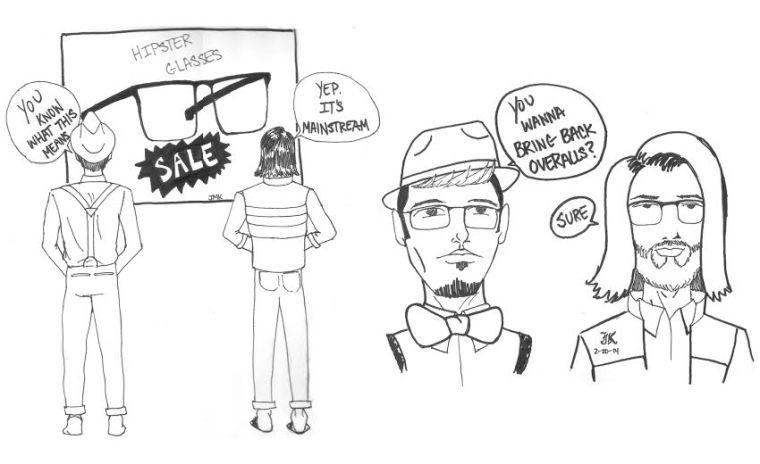Unless you don’t own a television, radio or computer—or you simply lock yourself inside your house—it’s safe to say that you’re affected by the media in some way. Most Americans know this, but I feel as though most of us are misled as to just how much the media controls us.
Our clothes, our haircuts, things we say, even how we think can be affected by the media.
Think about it. There is always a celebrity haircut that takes over hairdresser’s requests, whether it be “the Farrah Fawcett” or “the Jennifer Aniston,” hairstyles are influenced by the media.
Not to mention the music we listen to directly affects the clothes we wear as well. Jean jackets with patches: punk. Anything sparkly: pop. Ripped jeans: rock. The list goes on and on regarding the two forms of expression intertwining.
In fact, Youngjoo Na and Tove Agnhage conducted a study that appeared in the International Journal of Clothing Science and Technology in 2013. According to Na and Agnhage, “Fashion styles were initially adopted as a mechanism for expressing the type of music, but soon they became a critical factor in explaining and presenting the particular music.” They conducted a survey and found the correlation between fashion and music is very strong and, in fact, the two are thought of as a singular concept.
This means the media affects not only what we do, but who we are as people. Listening to the music the media has offered up for us in the mainstream has actually affected what we buy and how we want the rest of society to view us via the clothes that we wear. In this way, the media controls us. Even if we try to be different than the norm, it seems as though the media has already concocted a formula for us to want to feel that way. It is always one step ahead.
For example, the hipster revolution began in the last few years and has quickly become a mainstream trend. The entire hipster lifestyle stemmed from starving artists without money—which explains the out-of-style (which has now become in-style) clothing from goodwill, thick-rimmed glasses instead of contacts and music sounding like it was created with GarageBand instead of from some expensive recording studio.
Its whole deal is hipsters aren’t mainstream, but if there are a bunch of hipsters running around, none of them are different. Even if we try to be different, the media scoops it up and makes it mainstream style. The mainstream media had an eye for the emerging style and now every time we turn around we see mustaches, cats and oversized glasses which seem to signify the so-called “hipsterdom” in mainstream stores such as Claire’s or Forever 21.
With all of this said, we have two choices: Either sit back and let the media dictate what we wear and ultimately how we think, or try to escape this vicious cycle and make our own decisions. But unfortunately, I don’t think the second choice is even an option in our country.
Just as Na and Agnhage said, “The songs influence them to seek ways that will effectively portray their taste in music with fashion being the most effective and widely used media for music expression.”
If the songs are being fed to us from the mainstream media, it is almost as if we have no choice but to sit back and let our cookie-cutter preferences arise. This type of media control has been happening ever since music started diversifying because people wanted to represent the music they loved at all times, and what better way to do that than to put it on your body?











